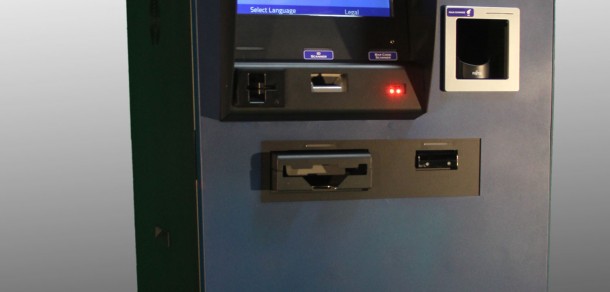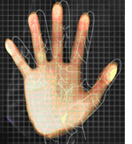RoboCoin drops biometrics at Bitcoin kiosks
27 November, 2014
category: Biometrics, Financial
When RoboCoin decided to remove biometric authentication from its Bitcoin ATM’s, CEO Jordan Kelley says it was a simple business decision. “For my business to make experiences consistent, my iPhone or my computer does not have a palm vein scanner. However, the kiosk did. In order to provide a consistent user experience, we had to deprecate the palm vein scanner,” Kelley says. “At the kiosk, the customer would go phone, PIN, then palm. That solution is definitely more secure. That solution is actually really cool. But, it was just a matter of making sure that we had consistency through all of our platforms.”
So, Fujitsu’s PalmSecure system is no longer an option for users of RoboCoin’s 100 or so Bitcoin ATM’s. But Kelley says the decision has nothing to do with the company’s product.
“Anybody who does want to use a biometric or some kind of a palm vein scanner, they sure as hell should be looking at Fujitsu because they’ve built a phenomenal solution,” Kelley says. “We still are very much in love with the palm vein scanner. The unfortunate reality was that it was a business decision based on scalability.”
Fujitsu has clients in health care, banking, transportation, retail and education. In the U.S., its services are mostly used for patient registration and point of sale authentication.“We have other customers that use (the palm vein scan) on ATMs and just love it. We have a customer in Brazil that uses it on 20,000 ATM’s,” says Kent Schrock, account and marketing executive at Fujitsu Frontech. “We have other BitCoin ATM manufacturers that are still using it.”
Fujitsu is looking to see if the registration process for biometric authentication can be tweaked to better suit users. It takes a few swipes of the hand during enrollment. After that, it’s usually one swipe during the regular authentication process. “On average, it takes about half a second to do the authentication” for the palm vein biometric, Schrock says.
RoboCoin’s future plans include some form of biometric solution. “The initial logic was to provide a very secure customer enrollment and customer login process, and we believed that introducing and including biometrics would add an ultimate level of security that would not be breachable,” Kelley says. “That is a stance that we haven’t changed on at all.”




